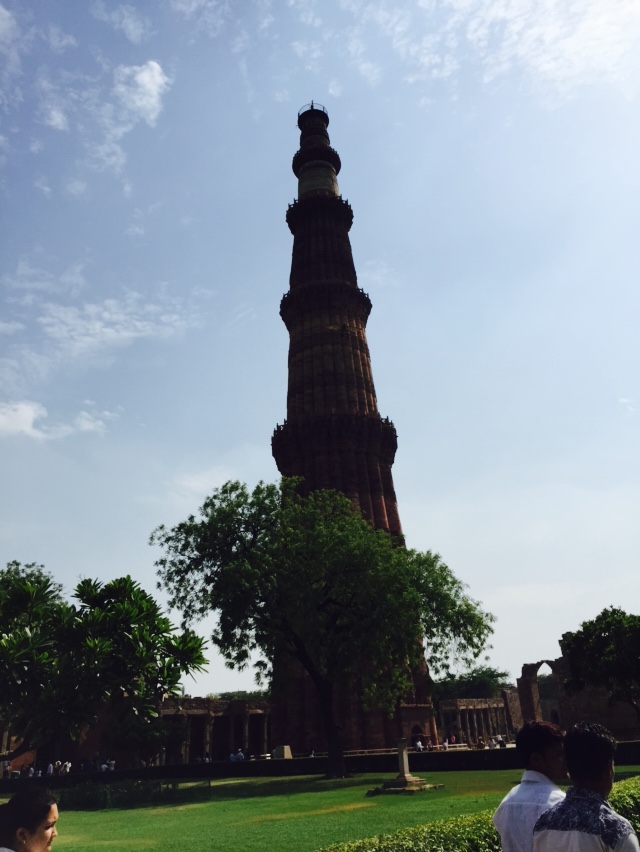I remembered serenity: crunchy, sweet and sour bowls of chaat in outside cafés, aimless walks down busy streets admiring lavish storefronts, gentle, white flowers, tumbling from trees above. Memories of a distant land became close, and images of my parents’ country became those of my own. With beaming anticipation, I patiently waited the rest of the flight.
Searing heat and a proud, beating sun greeted me as I stepped out of the Delhi airport. I was in North India. North India is home to thousands of years of history, the magnificent Taj Mahal, the marvelous remnants of countless ruling dynasties, tall spires, and sprawling citadels, gripping the countryside with thick, sturdy walls. The veiled North India, hidden to the wandering tourist’s eye, is home to thousands of poverty-stricken beggars wandering the roads, pitiful mounds of trash coating street corners like glue, and crippling infrastructure, with crumbling shacks and shanty-towns. I saw a striking juxtaposition of opulence and poverty.
Luggage dropped, a taxi hailed, I set off to sightsee. My family and I first stopped at Qutb Minar, a towering minaret of red situated in an ancient brick plaza— while I couldn’t traverse to the top, I stood on the ground and craned my neck to catch sight of the narrow tip. The scathing sun piercing my eye, I relentlessly pushed my head up till I was satisfied with the view. Faced by an architectural miracle, a jutting spire glaring down, I felt restless, an urge to leave.
The next day, I reluctantly left the luxurious hotel— Red Fort was the destination. A grand structure, Red Fort emitted a sense of power, a sense of authority. I waddled though the maze of brick, glancing at the soaring guard towers with delicate arches and curves protruding outward. I lumbered into the open center, surrounded by four massive walls on all sides, walls arduously constructed thousands of years ago. I was bored yet surrounded by splendor.
The remainder of the trip occurred with a dull familiarity— visit a new, famed stop, marvel for a few hours, return to the hotel. Each destination brought an immediate excitement, yet I was always panged by sensations of tiredness, fatigue, and impatience.
On the flight back to Phoenix, I was overcome by a subtle feeling: India would once again be a distant land I could only see on shows airing on the television, a land I could only hear when Hindi buzzed from the phone, a land I could only smell from the scents emanating from the kitchen. I was leaving India. Reclining back, I tried to remember the experiences that had rushed by so swiftly.
I found myself back in Qutb Minar, appreciating the renown and beauty of the spire. I noticed the delicate etching hugging the building and the poised red tip, tearing a hole in the blue sky; I saw the beautiful pictures carved by those thousand years past. I was once again in Red Fort. I glanced at the towering, encompassing red walls; I saw an enormous moat, overgrown with diverse plants, yet once filled with churning water, safely protecting the powerful stronghold.
Memories are amusing— they only shine when they fade. The thrill of travel resides not in the experience itself, but rather the memories, the memories that preserve astonishing grandeur, the memories that seal images of magnificent structures, the memories that depict endless seas of symmetry. I saw the beauty of North India on a flight back to America.
Dear Reader: This page may contain affiliate links which may earn a commission if you click through and make a purchase. Our independent journalism is not influenced by any advertiser or commercial initiative unless it is clearly marked as sponsored content. As travel products change, please be sure to reconfirm all details and stay up to date with current events to ensure a safe and successful trip.

